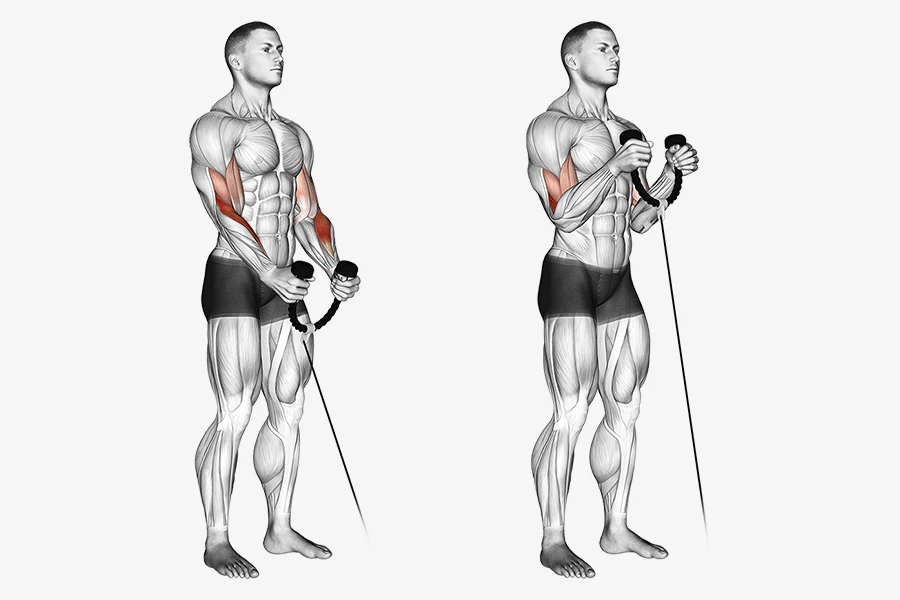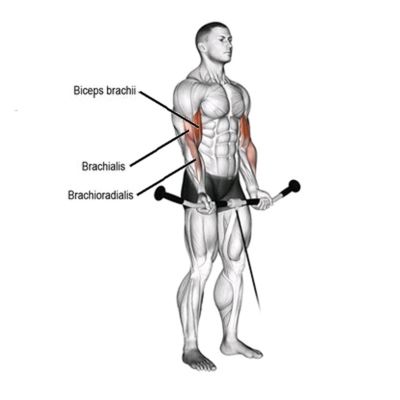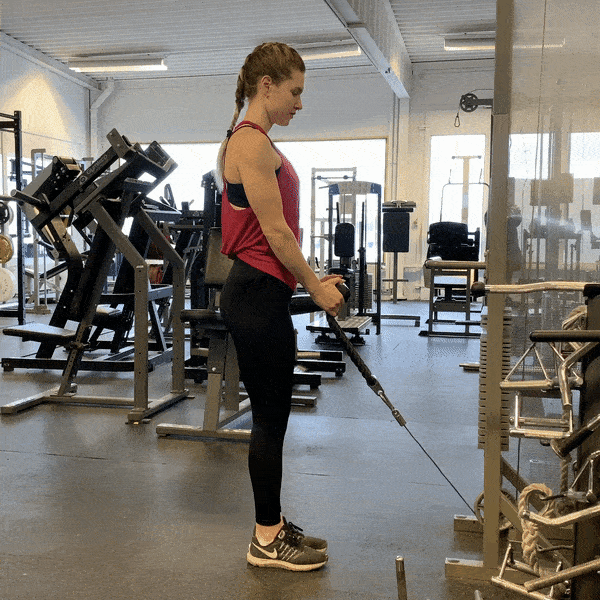The rope hammer curl is one of the most effective exercises to build arm strength and definition, particularly in the biceps and forearms. This variation of the traditional hammer curl utilizes a rope attachment on a cable machine, providing a dynamic range of motion that uniquely challenges your muscles. Whether you’re just starting or are a seasoned gym-goer, mastering the rope hammer curl can take your upper body workouts to the next level. Understanding the proper technique, which muscles are targeted, and how this movement compares to the classic dumbbell hammer curl will ensure you’re getting the most out of this exercise. Follow us here at Mulberry Founder Suggests LVMH ‘Step In’ Following Frasers Offer.
Performing a Rope Hammer Curl with Perfect Form

When it comes to performing a rope hammer curl with the correct form, the focus should be on maintaining a controlled motion throughout the entire movement to prevent unnecessary strain and maximize muscle engagement. Start by setting the rope attachment at the lowest setting on a cable machine. Stand with your feet about shoulder-width apart, grab the ends of the rope with a neutral grip (palms facing each other), and pull the weight by flexing your elbows while keeping your upper arms stationary.

As you curl the rope upwards, focus on squeezing your forearms and biceps at the top of the movement, ensuring your wrists stay neutral and you’re not using momentum to lift the weight. Slowly lower the rope back down in a controlled manner, resisting the pull of the cable. Keep your back straight and your core engaged to avoid swaying, which could reduce the effectiveness of the exercise. Performing a rope hammer curl with perfect form ensures optimal results while preventing injuries.
Related: Get the Latest Expert Insights on Understanding the Three Types of Levers in the Human Body
Related: Get the Latest Expert Insights on Nordic Hamstring Curls
Muscles Worked in the Rope Hammer Curl
The rope hammer curl is a fantastic exercise because it targets multiple muscles in one smooth motion, making it an efficient choice for arms training. Primarily, the brachialis, a muscle located underneath the biceps, is heavily engaged, contributing to increased upper arm thickness. Additionally, the biceps brachii, specifically the long head of the bicep, plays a significant role in the upward curling motion, giving the biceps that coveted peak appearance over time.

But it doesn't stop there. The forearm muscles, including the brachioradialis, also get a workout, improving grip strength and overall forearm definition. Because of the neutral grip used in the rope hammer curl, the exercise places less strain on the wrists and allows for a more balanced development between the biceps and forearms. By focusing on these muscle groups, the rope hammer curl delivers balanced arm growth and increased functional strength, making it a valuable addition to any strength training routine.
Rope Hammer Curl vs Dumbbell Hammer Curls
While both the rope hammer curl and dumbbell hammer curl serve the same general purpose of working the biceps and forearms, there are key differences that might make you choose one over the other depending on your workout goals. The most obvious difference is the equipment: the rope hammer curl requires a cable machine with a rope attachment, whereas the dumbbell hammer curl uses a pair of dumbbells.
The constant tension provided by the cable machine during the rope hammer curl is one of its most significant advantages. Throughout the entire range of motion, your muscles are continuously working, which may lead to greater muscle engagement compared to the dumbbell variation. In contrast, with dumbbells, the tension on your muscles decreases at the top of the movement, as gravity plays a larger role.
Additionally, the rope attachment allows for a slightly greater range of motion, which can help with muscle activation, particularly in the forearms. On the other hand, the dumbbell hammer curl offers more flexibility in terms of workout location and convenience since it doesn't require specialized gym equipment. Both exercises have their merits, and incorporating both into your routine can provide a well-rounded arm workout. However, if you're looking to optimize constant muscle tension and improve your grip strength, the rope hammer curl is the superior option.
Sample Workout Table Featuring the Rope Hammer Curl
To incorporate the rope hammer curl into your workout routine, you can follow a simple table that emphasizes building strength while ensuring balanced development in your arms. The table below provides a sample arm workout that targets the biceps, triceps, and forearms, using both compound and isolation movements.
Exercise | Sets | Reps | Rest (min) |
Barbell Bicep Curl | 4 | 8-12 | 1-2 |
Tricep Pushdown (Rope) | 4 | 10-15 | 1-2 |
Rope Hammer Curl | 4 | 10-12 | 1-2 |
Dumbbell Bicep Curl | 3 | 8-10 | 1-2 |
Overhead Dumbbell Tricep Press | 3 | 8-10 | 1-2 |
Wrist Curls | 3 | 12-15 | 1-2 |
In this workout, the rope hammer curl serves as the primary exercise for targeting the biceps and forearms. It is placed third in the routine to ensure your arms are fully warmed up and ready for an isolation exercise that demands focus and controlled movement.
The Future of the Rope Hammer Curl
The future of fitness trends, including exercises like the rope hammer curl, is shifting towards more functional and dynamic training approaches. With the rise of interest in calisthenics, CrossFit, and sports-specific training, movements that emphasize real-world strength and endurance, like the rope hammer curl, will continue to be a staple in gym-goers' routines. Additionally, as people increasingly look for ways to improve their grip strength, particularly in activities such as rock climbing, martial arts, and functional fitness, exercises that target both the forearms and biceps are becoming more popular.
Moreover, as fitness enthusiasts seek variation in their routines to prevent plateaus, the rope hammer curl will remain a favorite due to its unique ability to continuously engage muscles throughout the entire movement. Coupled with its low risk of wrist strain, the rope hammer curl offers longevity in training, making it suitable for lifters of all experience levels. With the integration of advanced equipment and cable machines in modern gyms, this exercise is expected to remain a highly effective and easily accessible option for building arm strength and definition.
Conclusion
The rope hammer curl is a versatile and effective exercise that targets the biceps, brachialis, and forearms, offering balanced arm development and improved grip strength. By learning to perform this movement with perfect form, you can ensure optimal muscle engagement while minimizing the risk of injury. When compared to traditional dumbbell hammer curls, the rope variation provides constant tension, making it an excellent addition to any workout routine. As fitness trends evolve and the focus on functional strength continues to grow, the rope hammer curl is poised to remain a crucial exercise for anyone looking to build strong, defined arms.